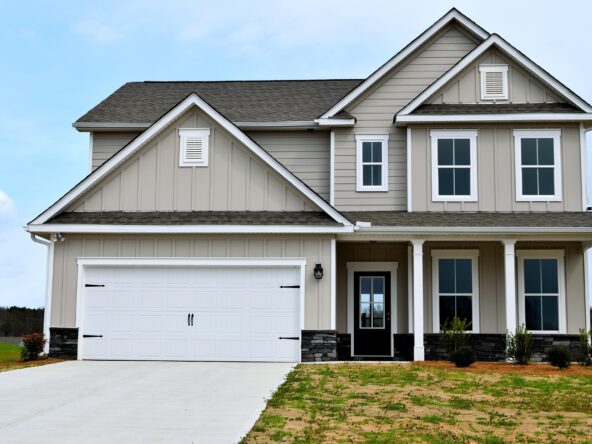- Renters should begin their apartment search within 1-2 months of their anticipated move-in date
- The best time of year to look for apartments is during the winter months, when demand is low
- Summer is typically the season with the highest rent prices
So, you’re in the market for a new apartment. If you’re looking to move places, cities, or even across the country, identifying a timeline for apartment hunting is important to securing your ideal unit. How do you know when it’s the best time to start looking for apartments? Many renters make the mistake of starting their search too early or too late, so we’re here to give you the inside scoop on the optimal apartment hunting timeline. Here’s how to know when it’s time to start looking for a new apartment.
Identifying your move-out and move-in date
Identifying your move-in date is the first step in the apartment hunting process. Many rentals require 60 days notice if do not plan to renew the lease for your current unit. Your apartment management company will likely send you updated lease documents within 90 days of the end of your lease term. Once you have the information on the new terms of your lease, including monthly rent increases, you can decide if you want to commit to another long-term lease, opt for a month-to-month or short-term rental option, or start your search for a new apartment. If you’re been wanting more living space, or you want to make the move to a more desirable area, this is your chance for a fresh start. Once you’ve made the decision to move and have identified your move-in date, you can begin the apartment hunting timeline.
Apartment hunting timeline:
You should start your search for a new apartment 30 to 60 days before the end of your current lease. Learn what you should do within 90, 60, and 30 days of your anticipated move-in date:
90 days from move-in date
The rental market is best when you’re looking 1-2 months in advance of your expected move-in date. If you start looking for an apartment 3 months in advance, you’ll run into the problem of availability. What’s available 3 months in advance of your move-in date will likely be unavailable when you’re ready to move in. If you’re in a particularly desirable market, these numbers are even more applicable. However, while 90 days is too soon to start touring units, you can use this time to identify neighborhoods of interest and buildings in those areas that you’d like to keep your eye on. If you have a pet, you can start your search by identifying which buildings in the area have pet-friendly units.
At this stage, you should start researching and creating a list of potential apartments that meet your criteria. Use online resources, real estate websites, and local listings to find properties that fit your budget and desired location. Get a sense of the rental market in the area, including typical rent prices, move-in fees, and security deposit requirements. Use these 90 days to narrow your search and to get an idea of what floorpans and amenities are appealing to you.
Having priorities, requirements, and even a checklist of what you want in your next place will help narrow down your search further down the apartment hunting timeline. Consider which of the following amenities you need and which you could live without:
- Parking space
- In-unit laundry
- Dishwasher
- Backyard/yard for pet
- Swimming pool
- Elevator
- Fitness center
- Resident lounge/common space
60 days from move-in date
With 60 days left until the move-in date, you should start reaching out to landlords or property management companies to schedule viewings of the apartments you are interested in. It’s important to bring a checklist of items to look for during the viewing, such as the condition of the appliances and the overall condition of the property. You should also have your move-in budget in mind and be prepared to discuss rental rates, lease terms, and other costs associated with the move. By now, you should have an idea of the type of rental unit you’re looking for and your desired general location. You can now start to browse available listings online. The rental inventory will be up to date during your search and you’ll be ready to schedule a tour of potential units once you find something. To help with your search, consider the location of each apartment.
Think about which neighborhoods you could see yourself in and which ones are off the table. You’ll want to factor in:
- Budget
- Commute to work
- Favorite places/hobbies and interests
- Public transit
- Cafes, grocery stores, restaurants
Ask the potential landlord these key questions before you make a decision. Take into consideration the surrounding neighborhood, ask about the neighbors or fellow building residents, and make sure you know what your commute to work would look like. Be prepared as your tour available units and come with necessary paperwork and your completed rental application so that you can secure your apartment before the competition.
If you live in an area where the rental market is more competitive, 60 days is the ideal time to get going with scheduling tours, viewing units, and even signing a lease. Whereas other markets allow for a shorter timeframe of 30 days.
30 days from move-in date
With 30 days left until the move-in date, you should have a clear understanding of the rental market and a short list of apartments you are interested in. At this point you should finalize the decision on the apartment you wish to rent, complete any necessary paperwork, and pay any move-in fees and security deposit. This is also when you should schedule a walk-through with the landlord or property management company to ensure that the apartment is in good condition and to document any existing damages. Additionally, you should begin planning for the move, including making arrangements for movers, getting necessary supplies for packing, and notifying the utility companies of the change of address.
Getting ready for your move
Now that you’ve found your ideal new living space, it’s time to get ready to move. Within the next few weeks of your move, prepare by following these 6 steps:
- Make arrangements for movers: Choose a moving company or rent a truck, and schedule the move for the desired move-in date.
- Get necessary supplies for packing: Purchase boxes, tape, bubble wrap, and other supplies for packing.
- Notify utility companies: Schedule disconnection of services at the current residence and connection at the new residence with the utility companies.
- Walk-through of rental property: Complete a walk-through of the rental property with the landlord or property management company and document any existing damages.
- Review insurance coverage: Contact your insurance provider to ensure you have adequate coverage for your personal belongings during the move.
- Plan ahead: Plan ahead to ensure a smooth transition to your new home, including packing a essentials box, making arrangements for pets and plants, and preparing for any special moving requirements.
If it’s finding a place that you’re concerned about, don’t worry. Apartments become available and hit the market daily, so there will always be something out there that fits your needs. Just remember to start your search well in advance to move-in date and you’ll be prepared when you find your new living space.
Frequently asked questions about apartment hunting
What is the best time of year to look for an apartment?
Historically, the best time of year to look for an apartment is in the winter months. Most renters don’t want to move during the holiday season and don’t want to deal with cold, unpredictable weather when moving. If you are looking to find the best deals and experience less competition in the rental market, you may want look into a winter move.
When is the worst time of year to look for an apartment?
The summer typically brings the most competition in the rental market. The weather is favorable and renters are more inclined to plan their move during this time, which can mean higher rent prices and greater competition.
How soon after I sign a lease will I be able to move in to my new apartment?
This will depend on the availability of the unit. It’s possible to sign a lease for an apartment that is still occupied. You will want to confirm your move-in date with your new landlord so that you can plan your move accordingly and provide sufficient notice to vacate for your current rental.
How much notice should I give my current landlord before moving out?
Typically, a renter should provide their landlord with a written 30-day notice before moving out. This gives the landlord enough time to find a new tenant and make necessary arrangements.
How much should I budget for my move?
The amount you need to budget for your move depends on several factors, such as the cost of moving services, the distance of the move, and the amount of belongings you have. It’s a good idea to get quotes from different moving companies and take into account any additional costs, such as supplies for packing and transportation of larger items. You’ll also want to budget for any deposits to pay prior to moving in, and any items you may need to purchase, including furniture.
What time of year are rents the highest?
Summer is generally the season when rent prices are at their highest. This is largely because of the warm weather. More people want to move during the summer months, causing competition to spike and rent prices follow suit.
When is the best month to start looking for an apartment?
When looking at rental trends, rent prices typically begin cooling in the fall. If looking to avoid moving during the winter, while still taking advantage of lower rent prices, October is the best month to begin your search.





